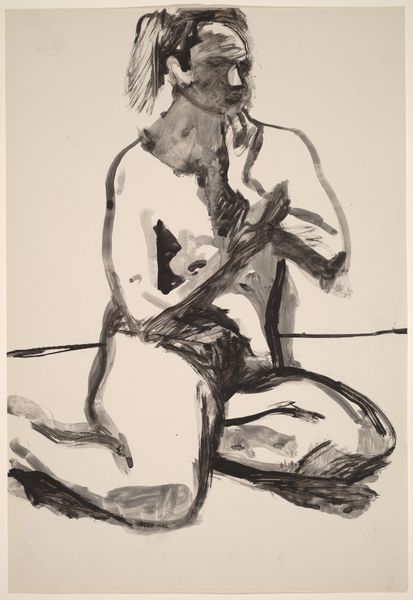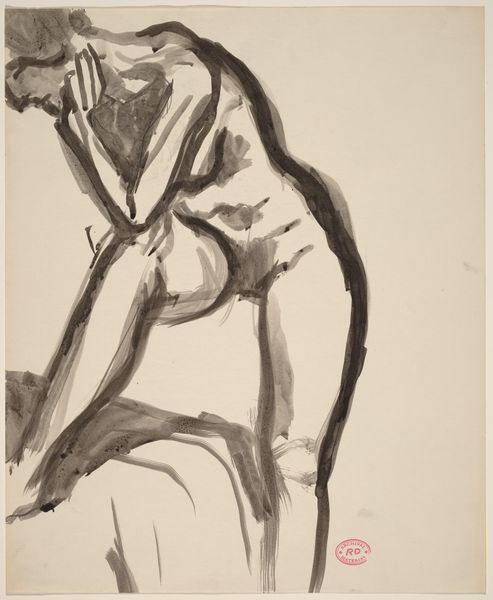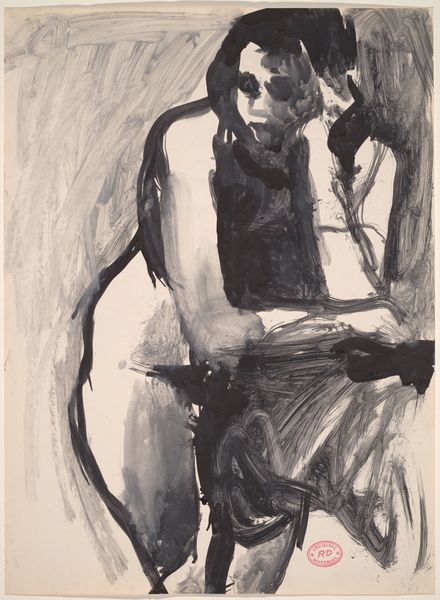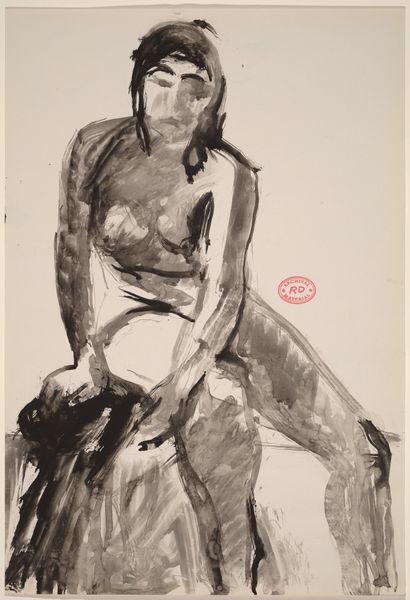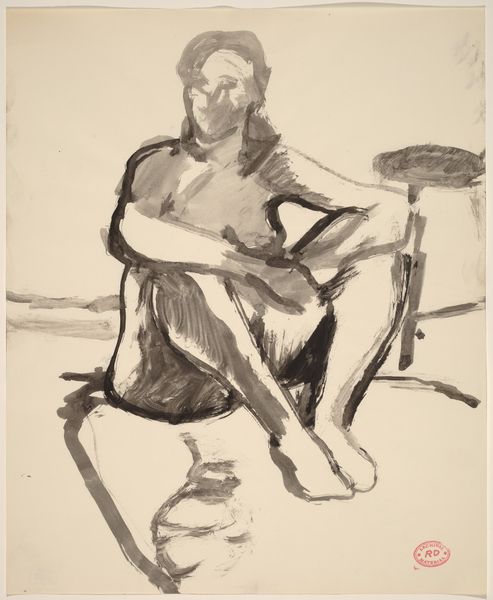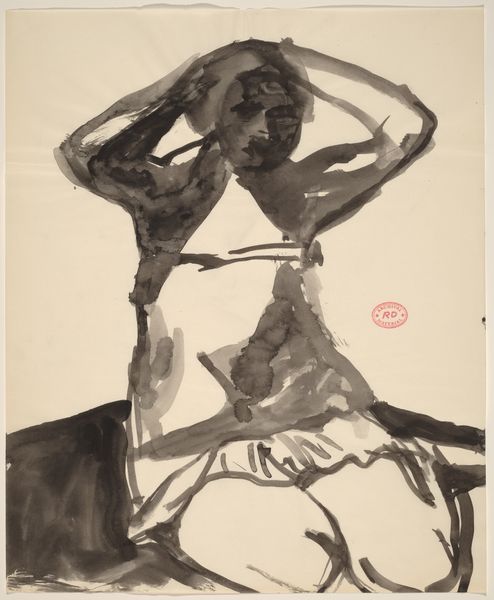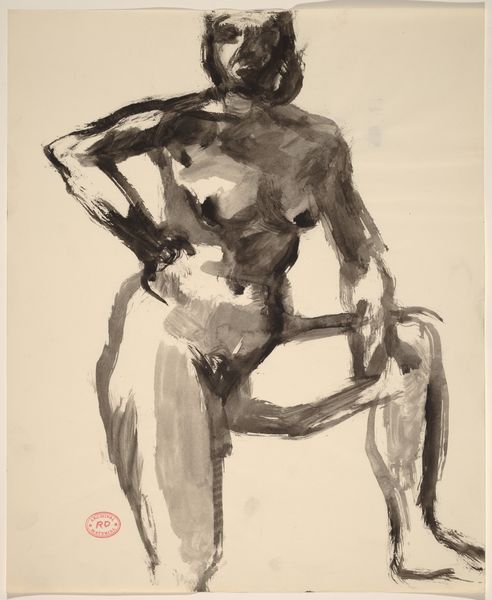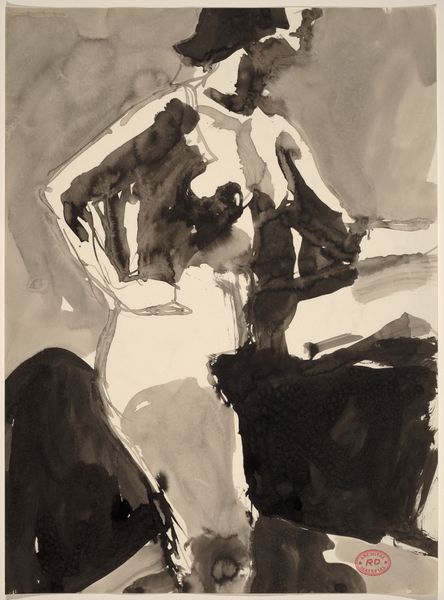![Untitled [seated female nude] by Richard Diebenkorn](/_next/image?url=https%3A%2F%2Fd2w8kbdekdi1gv.cloudfront.net%2FeyJidWNrZXQiOiAiYXJ0ZXJhLWltYWdlcy1idWNrZXQiLCAia2V5IjogImFydHdvcmtzL2E3YTc4YzBiLWY1NTUtNDMwMS04ODY3LWU2ZmFjY2ZjZjc1NS9hN2E3OGMwYi1mNTU1LTQzMDEtODg2Ny1lNmZhY2NmY2Y3NTVfZnVsbC5qcGciLCAiZWRpdHMiOiB7InJlc2l6ZSI6IHsid2lkdGgiOiAxOTIwLCAiaGVpZ2h0IjogMTkyMCwgImZpdCI6ICJpbnNpZGUifX19&w=3840&q=75)
drawing, gestural-painting, ink
#
drawing
#
ink drawing
#
figuration
#
gestural-painting
#
bay-area-figurative-movement
#
ink
#
abstraction
#
nude
Dimensions: sheet: 42.9 x 35.2 cm (16 7/8 x 13 7/8 in.)
Copyright: National Gallery of Art: CC0 1.0
Editor: Richard Diebenkorn's ink drawing, *Untitled [seated female nude]*, created sometime between 1955 and 1967, strikes me as both intimate and powerful. The stark contrast of black ink on the paper really emphasizes the weight of the figure. What do you see in this piece? Curator: It's a study in capturing a feeling more than an exact likeness, isn't it? Diebenkorn is more interested in the gesture, the emotional resonance of the pose. For me, the beauty lies in its incompleteness; those bold, almost brutal strokes of ink evoke a raw energy. Does it make you think of any other artists? Editor: Maybe a bit of Matisse, with that simplified form and focus on line. But Diebenkorn feels much more…urgent. Less about beauty and more about expression. Curator: Exactly! There's this wonderful tension between abstraction and figuration that keeps pulling me in. It's not about perfection, but about capturing a fleeting moment, an impression. You feel like you’re in the studio, watching the artist work, right? Editor: Definitely. I'm also intrigued by the composition. It seems both deliberate and spontaneous. How do you think Diebenkorn achieved that? Curator: Ah, the magic! He was a master of editing, I think. Of knowing what to leave out. The negative space becomes just as important as the ink, suggesting form and shadow. That takes confidence. Editor: It’s amazing how much emotion he conveys with so little detail. Curator: Indeed. The power of suggestion, darling, the power of suggestion! Editor: This has really opened my eyes to appreciating the beauty of unfinished, gestural works. It’s not about flawless representation but the artist's individual expression. Curator: And that, my dear, is where the true magic of art resides. It’s a reflection, not just of the subject, but of the artist’s very soul.
Comments
No comments
Be the first to comment and join the conversation on the ultimate creative platform.
